Spotlight Story
Calling all condom designers
May 17, 2012
There are a million free condoms in the naked city, and the Los Angeles County Department of Public Health sees a branding opportunity in that.
In an effort to help curb sexually transmitted diseases, the department’s Division of HIV and STD Programs this month will announce a contest to design an official L.A. condom wrapper to help brand the free prophylactics the county distributes to local businesses, social services and healthcare providers. Ads will invite county residents to come up with “L.A.’s Next Sex Symbol.”
“Our tagline is going to be ‘Show Me Your Package’,” says Project Manager True Ann Beck.
The lighthearted derby is part of a serious push in Los Angeles County to consolidate public health outreach on sexually transmitted diseases. An estimated 2,000 new HIV infections occur annually in L.A. County. Last year, the department reported more than 47,500 new cases of chlamydia, more than 9,500 new cases of gonorrhea and nearly 1,800 new cases of syphilis.
Each year, grant money is distributed by the county to local health care providers to purchase and distribute free condoms, which help prevent sexually transmitted diseases. (About 250,000 have been handed out so far this year, at a wholesale price of about six cents apiece, Beck says.) The contest is a small part of a larger centralization of STD prevention that has already merged three county programs.
The design contest, which will run from May 21 to June 17, will be facilitated by KCBS Marketing with help from the county’s condom wholesaler, Boston-based One Condoms, Beck says. Entrants must be Los Angeles County residents over the age of 18.
Rules will be posted on the contest web site (LASexSymbol.com), but generally, entries cannot be trademarked, copyrighted or sexually explicit. The winner and nine runners-up will receive prizes and gift cards, plus bragging rights to a package design that will be distributed countywide and featured in future condom promotions. All ten will be produced and distributed.
“We want to circulate more than one design so people can collect them all,” Beck says, adding that the initial plan is “to start with a million and one condoms.”
Updated 6/14/12: Learn more about the contest at the Downtown L.A. Art Walk tonight. Check out the 40-foot RV parked at 24 Main Street.
Public health officials note that contests are only one way among many to raise awareness and improve Southern California’s health. Still, New York’s 2010 contest attracted nearly 600 entries, persuaded New Yorkers to cast more than 15,000 online ballots and conferred momentary celebrity on the graphic artist who submitted the winning wrapper design—a graphic representation of a high-tech power button.
Beck says the hope is that the entries will be so smart and lively that the public won’t think of the free condoms as a government program.
“It’s going to be very light and sexy and fun. We’ll probably get all sorts of comments, but the point is to get people talking, and to get them to practice safer sex,” she says.
Posted 5/17/12
Expo’s backstage safety patrol
April 27, 2012
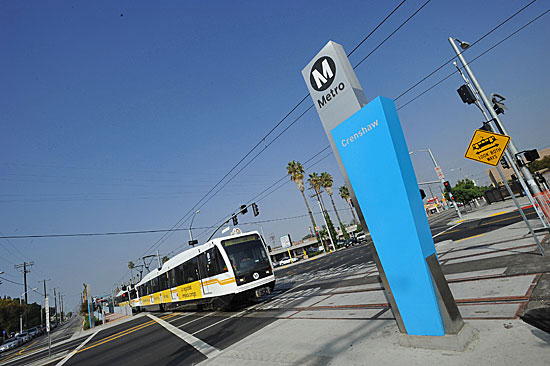
With new Westside rail service, officials want to make sure that trains, cars and pedestrians safely co-exist.
Launch time for the Expo Line means crunch time for Vijay Khawani and Barbara Burns.
With the official opening this weekend of Expo’s first phase, Metro safety and education officials like Khawani and Burns have been working their way down a to-do list that, like the line itself, stretches from downtown to La Cienega.
And then there are the new things that keep cropping up.
Like the guy in the Maserati who ignored flashing signals and almost pulled out in front of an approaching train Tuesday.
Khawani, Metro’s Executive Officer of Corporate Safety, was out on the line with inspectors from the Public Utilities Commission when he spotted the car moving toward the tracks, so he raced down the station ramp toward it, waving his arms and yelling to get the motorist’s attention.
Crisis averted.
Making sure drivers, bicyclists and pedestrians stay alert around the trains—especially while they’re still something of a novelty—is a major preoccupation as Expo gets ready to roll.
Khawani and Burns, manager of Metro’s Transit Safety Education Programs, are key players on a team that must not only ensure that Expo meets all the regulatory requirements but also presents a safe and familiar image to the public in the line’s crucial early days and weeks.
For months, Burns has been deploying a small army of “safety ambassadors”—24 retired bus and rail operators—into communities around the new line to help people navigate the new system and to report back on trouble spots.
“We start one year before any train takes the track,” she said. “In the beginning, it’s always chaotic.”
To educate the public about what’s headed their way, Burns’ team has conducted dozens of training sessions at schools, senior centers and libraries and with neighborhood watch and community groups, sent out hundreds of notices about train testing, put up 4,000 safety posters and handed out 60,000 flyers door to door.
They’ve also placed safety ads on the sides of 20 trains—with bilingual messages such as “Hear bells? See lights? Train’s coming.”
“We started to do it with the Eastside Extension (of the Gold Line) and found it to be very effective,” she said. “It’s like a moving billboard.”
Still, some people don’t get the message. There have been three collisions involving Expo Line trains since testing began—all the result of motorists proceeding against a flashing red light signaling an approaching train, Khawani said. The most recent accident, on April 19, was caused by a driver making an illegal left turn, he said.
“That type of accident is actually the most common type of light rail accident in the industry across the country,” he said. “I think education is a big component because this is something that’s new in the neighborhood. They’ve never had trains.”
Common sense goes a long way, he said. There have been no serious injuries in the Expo crashes, but a brand new Mercedes Benz was totaled on March 19 when its owner got distracted “playing around with the new navigation system,” he said.
“We can’t do it alone,” Khawani said. “They’ve got to obey the signs.”
Large crowds are expected to ride Expo for free on its inaugural weekend, Saturday and Sunday, April 28 and 29. And before the light rail makes its public bow, a series of technical and mechanical fixes have been required.
An automatic routing system to make sure Expo and Blue Line trains—which share some stations in downtown L.A.—get on their respective tracks logged 20 “misroutes” on a recent day of testing.
So at least at the beginning, controllers in Metro’s Rail Control Center (known as “The ROC”) will be routing the trains manually.
“It’s a temporary fix until we can assure ourselves that the automatic routing function is working reliably. It’s not a safety concern, it’s more an operational concern,” Khawani said. “When you’re on a train for Long Beach, you don’t want to end up in Culver City”—an unlikely scenario, he added, because the train operator would almost certainly notice the misroute before reaching the end of the line.
Another major priority is making sure that trains don’t block intersections. That has meant getting the city Department of Transportation to change signal timing to give train operators some extra “green time” to proceed through intersections—first 10 extra seconds and then, as of Sunday, 4 more.
“Four seconds make a big difference,” Khawani said. “Since Sunday, we have not seen any trains blocking any intersections. It has improved it dramatically.”
A test run Tuesday with the PUC inspectors onboard was largely successful, although two signs at the Crenshaw station needed to be relocated so trains can proceed without getting stopped between stations.
At the La Cienega station, Khawani checked to see that emergency lighting required by the L.A. Fire Department was in place and working. (It was, and he snapped a photo with his phone.)
No detail, it seems, is beneath his attention. He called in a mistake he spotted at the Western station, where a pavement sign reading “Stay Behind Yellow Line” was accidentally transposed to read “Yellow Line Stay Behind.”
Animated but apparently unflappable, Khawani has seen 20 years’ worth of launches since he joined Metro. And he says he has never doubted that the Expo Line would open Saturday.
“This is very typical of all openings,” he said. Still, don’t expect him to let his guard down anytime soon. “I don’t think there is ever a time when you get to breathe a sigh of relief.”
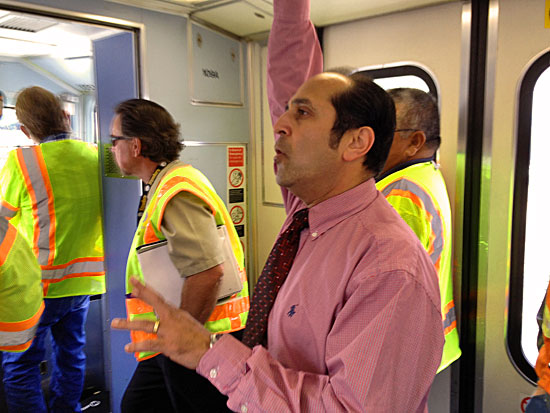
Vijay Khawani, Metro’s Executive Officer of Corporate Safety, rides Expo with safety team and PUC inspectors.
Posted 4/26/12
New library is just Malibu’s type
April 17, 2012
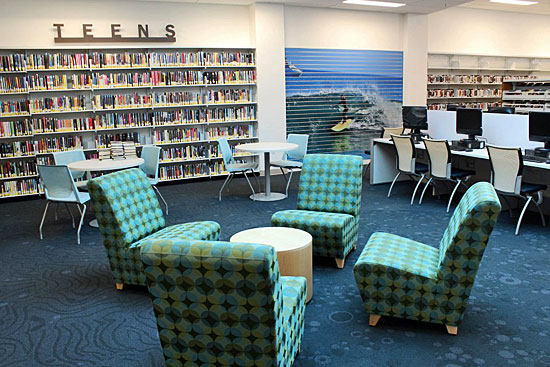
The Malibu Library, reopening this weekend, has undergone its first makeover since it was built in 1963.
It’s one thing to check out your favorite Hemingway novel. But it’s not every day that you can walk into a newly renovated library, sit down at the author’s 1947 Royal and peck out your own muscular prose.
So April 22 will be a big day in Malibu for a couple of reasons: First, the Malibu Library will be back in business after a two-year, $6-million makeover. And second, the celebration will include not only a bevy of local authors, but more than a half-dozen historic typewriters that will be available to type on in exchange for a $250 donation.
“People are going to love it,” predicts Los Angeles County Librarian Margaret Donellen Todd, who sees the library’s rebirth as a showcase for the literary and cultural roots of the famed coastal community.
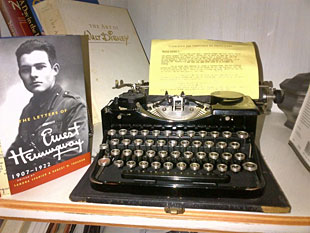
Hemingway's typewriter, along with those of other famed authors, will be on display for the library's opening.
“It’s directly across from Legacy Park, so you have that view. There’s a reading and activity garden, and glass walls that bring the outside in. The civic art is amazing—the children’s mural is beautiful, and we’ve done a tile carpet that’s a replica of the one at the Adamson House at the entry.
“There’s a teen librarian who’s going to do a lot of outreach, and there’ll be a speaker series. And we’ve gotten $25,000 to build a special collection on the surf and the ocean and sustainability.”
The renovation is the county library’s first since it was built in 1963. Spearheaded by former Malibu City Council member Sharon Barovsky, outgoing Council member Pamela Conley Ulich and Los Angeles County Supervisor Zev Yaroslavsky, it was financed with property tax revenue that had been set aside since 2004. The Malibu library is just one several recent library construction projects, including the opening of the Topanga Library in the Santa Monica Mountains.
Among other highlights, the Malibu Library includes an enlarged 100-person community room, a teen study room with floor-to-ceiling images of local surfers, a replica of a landmark lighthouse that doubles as a family restroom and indoor-outdoor spaces and skylights that bring a new sense of airiness to the nearly 50-year-old facility.
Actors Dick Van Dyke and Pierce Brosnan will be special guests at the 10 a.m. to 3 p.m. dedication, but the heart and soul of the new building will be the written—and typewritten—word.
As a kickoff exhibition, L.A. developer and civic leader Steve Soboroff offered to share his historic typewriter collection for the day of the ceremony, giving the public a one-day opportunity to try out some of the famous implements in exchange for a $250 donation that will benefit Malibu High School and the Emily Shane Foundation, a local nonprofit. On display will be typewriters that once belonged to Ray Bradbury, John Lennon, Ernest Hemingway, George Bernard Shaw, Andy Rooney, Joe DiMaggio and others.
Also available for viewing, but not for typing, will be the typewriter that once belonged to Ted Kaczynski, also known as the Unabomber.
“We think it might be offensive to some people if we were to let people type on that one,” Todd says. “It probably wouldn’t the best way to raise money, although it would be unique.”
The library also has enlisted the presence of a number of homegrown authors, including “Point Dume” author Katie Arnoldi, Delores Rivellino (“The Malibu Cookbook”), Susan Stifelman (“Parenting Without Power Struggles: Raising Joyful, Resilient Kids While Staying Cool, Calm, and Connected”) and Viki King (“How to Write a Movie in 21 Days”).
Todd says part of the renovated library’s new mission will be an enhanced speaker’s series and an area in which she plans to showcase books by locals.
“I’m really looking forward to building that out as time goes on,” Todd says. “We’re going to take our time and see what works.”
Posted 4/17/12
Searching for CicLAvia’s slow gear
April 11, 2012
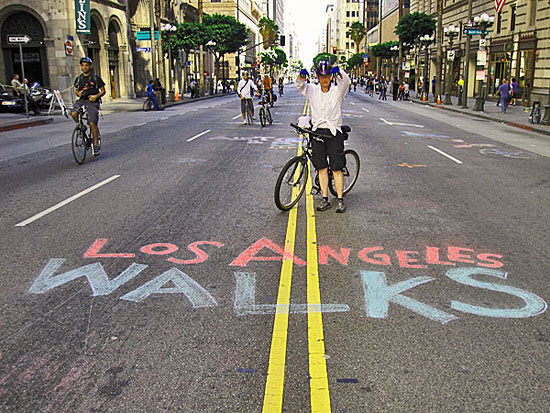
As pedestrians make their mark on CicLAvia, organizers urge cyclists to slow down and share the route.
If you go to CicLAvia this weekend, keep an eye out for Deborah Murphy.
She’ll be the one walking down the middle of the street with her Jack Russell terrier puppy, sharing her mantra with the sea of bicyclists around her:
“Slow down. Look around. Meet someone.”
Murphy, one of Los Angeles’ foremost pedestrian advocates, has walked in all three CicLAvias since the car-free street festival started here in 2010. She hopes that when the fourth gets underway at 10 a.m. on Sunday, April 15, she’ll see evidence that her message is gaining traction with the cyclists who make up 80% to 90% of the crowd.
“I want to believe it’s getting better,” said Murphy, founder of the advocacy group Los Angeles Walks and chair of the city’s Pedestrian Advisory Committee, who said she was alarmed the first time out by cyclists zooming downhill at one point along the route (where a “mandatory dismount” rule is now in effect.) “That’s not what CicLAvia’s about…This is a street party. This is not a street race.”
That sentiment is seconded by Josef Bray-Ali, the owner of the Flying Pigeon bike shop, who wrote a much-discussed blog post last April about taking his young daughter out on the route.
“This was the first time our 3-year old daughter had a chance to ride her bike in the street. The magic of that moment was ruined by CicLAvia participants on their bicycles riding by us on the left and right (while we were on the right hand shoulder of the street) going, frankly, too darn fast,” Bray-Ali wrote. “It is a perversion of the spirit of CicLAvia that the entire course is turned over to the fastest mode on the road…Let’s get this day right, Los Angeles!”
In other words, whose CicLAvia is it anyway? As the still-young event grows and changes, its identity is evolving as well—with a large and vocal cycling population reveling in having its own five-hour, 10-mile stretch of nirvana in an otherwise car-dominated metropolis, while an equally passionate walking community stands eager to claim its place on the pavement, too. The challenge of striking a balance stands as the price of success as CicLAvia comes of age.
With organizers expecting their biggest crowd of more than 100,000 on Sunday, such growing pains are proving somewhat ironic for the influential bicycle enthusiasts who started CicLAvia and view it as a key achievement in Los Angeles’ bike evolution.
“Every day of the week, we feel disrespected by cars. Let’s not be the oppressors,” said Joe Linton, a fulltime CicLAvia consultant and longtime L.A. cycling advocate. While he said that “99.9% of people have a great time at CicLAvia, whether they’re walking or biking, or 4 years old or 80 years old or 22 years old,” he said all participants need to bring mutual respect, common sense and a willingness to engage with each other.
“Everybody’s in this together,” he said. “Everybody needs to watch out.”
That said, cyclists’ passion for CicLAvia is so strong that it may tend to block out the possibilities for other ways to participate.
“We love that it’s an awesome bike event. There’s a sense that it’s so wonderfully ‘bike-y’ that people don’t realize they can do it in other ways,” Linton said. “We definitely are concerned about being inclusive.”
Pedestrians are welcome anywhere along the route, but first-timers might be especially comfortable strolling along Spring Street, Linton suggested. “It just feels really different. It’s quiet, you can see the architecture.” (Speaking of which, a new guide showcases the architectural and design high points all along the CicLAvia route.)
For novice cyclists, Linton has this advice: “Don’t bike all five hours. Stop for lunch. Don’t think of it as a workout; think of it as an exploration.”
The Los Angeles County Bicycle Coalition this week posted its own series of cyclist tips for riding safely and keeping an eye out for others.
Organizers say that the more CicLAvia becomes a street festival—with frequent musical, culinary and entertainment distractions—the slower the pace and the better for participants of all ages and experience levels.
So a key part of CicLAvia’s evolution has been to encourage dodge ball games, giant chess sets and movable photo booths, as well as musical acts and other spontaneous diversions along the route. REI will be sponsoring a climbing wall at the Hollenbeck Park hub, while the African American Firefighter Museum Hub on Central Avenue will feature museum tours, musical performances and a bike show starring the Real Rydaz Lowrider Bike Club.
Downtown, the Nature Conservancy will be raffling off two Schwinn-donated beach cruisers at 7th and Figueroa. It’s one of the organizations (others range from the Asian Pacific American Legal Center to the car-sharing service Zipcar) that will be “adopting” intersections and helping to manage bike-and-pedestrian flow through intersections which cars will be allowed to traverse intermittently. The groups will also be spreading their messages—an opportunity not lost on Los Angeles Walks, which has adopted 7th and Broadway.
The idea is to create an “intersection celebrating pedestrians,” L.A. Walks steering committee member Alissa Walker said in an email. On tap: “Lots of foot-friendly activity including double-dutch jump rope and hula hooping.” (Those inspired to help the group advance its pedestrian-friendly mission can do so even after CicLAvia is over by attending L.A. Walks’ karaoke fundraiser at Atwater Crossing on Saturday, April 21.)
Walker, a cyclist, pedestrian and blogger at Gelatobaby, concedes that she, too, was “a bit intimidated by all the bikes at previous CicLAvias.”
“But I think the best thing we can do is show all the different ways that streets can be used,” she said, such as a book club discussion she helped organize with L.A. Times architecture critic Christopher Hawthorne beside the 110 Freeway during last April’s CicLAvia.
This time out, she suggests pushing the envelope even further: “Grab some food to go and put a blanket out on the street.”
That’s right out of the playbook recommended by Flying Pigeon owner Bray-Ali, who blogged about the speeding cyclists last year. He thinks the best way to make CicLAvia evolve to become more inclusive is to harness more corporate sponsors to create crowd-pleasing digressions along the route and to find ways to make local merchants love it as much as the cyclists do. “Bring your bike and your wallet,” he suggests.
“It’s going to take work to make it work for pedestrians and people in walkers and wheelchairs, especially on the business side of things,” he said. “But that’s really when the power of the event takes over.”
And as CicLAvia grows, so do its participants, like Bray-Ali’s daughter, who’s now a road-tested CicLAvia veteran on a kiddie bike.
“Now she’s four, and she hauls,” he laughed. “Her bike is too slow for her.”
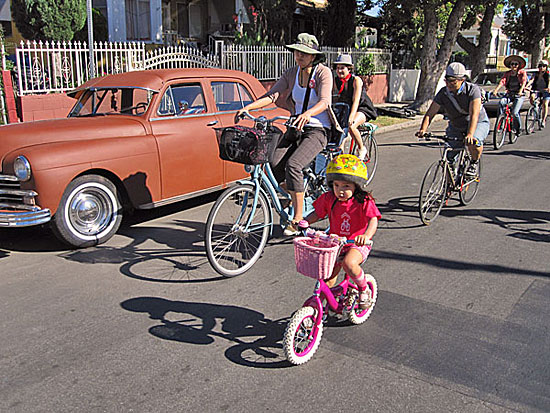
Valentina Bray-Ali leads the way to CicLAvia from her dad's Flying Pigeon bike shop. Photo/ubrayj02 via Flickr
Posted 4/10/12
Eating it up on the Expo Line
March 28, 2012
They dubbed it the Pastrami Express. When the Red Line subway came to Langer’s MacArthur Park neighborhood in 1994, offering a convenient way for downtown workers to get their pastrami-on-rye fix, it touched off a transit-driven boom for the legendary delicatessen, family-owned since 1947.
After an inaugural weekend of free rides on the new subway, deli owner Norm Langer showed up Monday and was met with a miraculous sight: customers, by the hundreds.
“I had 500 people on a waiting list,” he recalled. It was a welcome turnaround for a business suffering at the time from demographic shifts and high crime in the neighborhood. “My light at the end of the tunnel was the Red Line,” he said. “If it didn’t open, we would have closed.”
Today, business is better than ever in a revitalized neighborhood, Langer said, continuing to marvel at the Red Line effect. “It’s phenomenal. And it gets better over the years because there are more lines that tie into it. We’ve had a great resurgence of our customer base because of it.”
Now a new generation of restaurateurs, business owners and cultural institutions is looking to another much-anticipated public transit project—the Expo Line—and hoping that the gravy train will soon be pulling up to their establishments, too.
Make that the chili, hot dog, fresh fish and cobbler train.
Earlez Grille is among those preparing for an influx of newcomers when the first Expo trains roll out on April 28.
“It’s a great thing,” said Cary Earle, who owns the establishment with his brother Duane and mother Hildred. The Grille’s location—beside the Crenshaw station and a few stops away from the University of Southern California—is prime, he said. “It’s going to give us a lot of USC students.”
First-time visitors should try the basics, he said: a beef hot dog with mustard and cooked onions, washed down with a Playa’s punch, a non-alcoholic mixture of red fruit drink and lemonade.
The restaurant, on the former site of Jack’s Chili Factory, also specializes in chili made from Jack’s original recipes. On a recent Expo Line test run for the media and elected officials, Metro CEO Art Leahy said he’s looking forward to eating there once Expo opens. “It will now be a hot downtown lunch spot,” he predicted.
Another potential hot spot is Mel’s Fish Shack on Jefferson Boulevard, a short walk from Expo’s Farmdale station, which is slated to open later in the spring, after the initial rollout.
“I pray that it will bring us a windfall of customers,” owner Georgette Powell said, sitting at the counter of her tiny eatery, where cooks like Jerry Rhodes fry up corn flour-dusted catfish, snapper and shrimp along with healthy innovations such as grilled salmon salad and tilapia wrap with dill sauce.
“I have felt isolated for many years” in terms of the accessibility of her location, said Powell, 44, who learned the business from her late father, Mel. “The train makes us more desirable.” Powell hopes eventually to expand Mel’s to other locations and perhaps start a community-based culinary school to train aspiring cooks in the “healthy soul food niche.”
Some, however, are skeptical about the train’s ability to deliver new customers.
“Will anybody walk over two blocks, when they’re traveling from Point A to Point B? I don’t think so,” said Carolyn McMillan, co-owner of The Kobbler King on Jefferson, near the Crenshaw station. Those who do make the trip, however, should try one of the savory cobblers like chicken or seafood, she said, with berry cobbler for dessert. “Peach and apple are good, don’t get me wrong, but I like the berries,” she said.
Initially, the Expo Line will travel between Metro’s 7th Street Center downtown and La Cienega/Jefferson. Some of its marquee destinations are big, internationally known venues—Staples Center, USC, the county Natural History Museum, the Coliseum. The California Science Center is expecting a “significant increase” in attendance, buoyed in part by the Expo Line and also by anticipated blockbuster shows devoted to Cleopatra, and, later, the Space Shuttle Endeavour.
But smaller venues, like the Lula Washington Dance Theatre near the Crenshaw station, are also hoping for a boost in visibility. “The main impact is that people will go by our place and see us,” said Executive Director Erwin Washington, who noted that many of the troupe’s dancers and students will also have an easier time getting to the theatre on the Expo Line.
At the California African American Museum, served by the new line’s Expo Park/USC station, director Charmaine Jefferson said staff at the admission-free museum would also have a better commute to work. In addition, having a light rail option should help overcome one of the major downsides of its location near the Coliseum: patrons who stay away on sporting event game days. “You’ll have guests who’ll say, it’s going to be a zoo; I don’t want to go there,” she said.
The rollout of the first phase of the Expo Line will culminate with the opening of the Culver City station at Venice and Robertson, expected this summer.
At Culver City’s quirky Museum of Jurassic Technology, archivist and administrator Hana van der Steur said the train will be a benefit for current visitors and supporters—as well as those who have yet to discover the collection of oddities and treasures.
“We’re basically ecstatic to have it,” she said. “We’re really hoping that people will take advantage of it. The museum is the kind of place that you really have to visit in order to get a good sense of it.”
Among owners of Culver City’s many eateries, there’s some uncertainty about what the station opening will mean for the area, already known as a dining destination for many on the Westside, said Ken Kaufman, the owner of Rush Street and City Tavern, who also serves on the board of the Culver City Downtown Business Association.
“We’re not sure of it. We know that the culture of L.A. is a car culture, and we don’t know how quickly people will adapt to using the train,” he said. “We don’t expect it to have a significant effect, but we hope we’re wrong.” He said a much bigger impact is expected four years from now—when Expo Phase 2 opens from Culver City to Santa Monica, giving traffic-challenged Santa Monicans a quicker route to dinner.
“As someone who takes reservations,” he said, “everybody knows that people who come from Santa Monica are always a half hour late.”
For a sampling of other attractions along the Expo Line route, check out Metro’s Destination Guide.
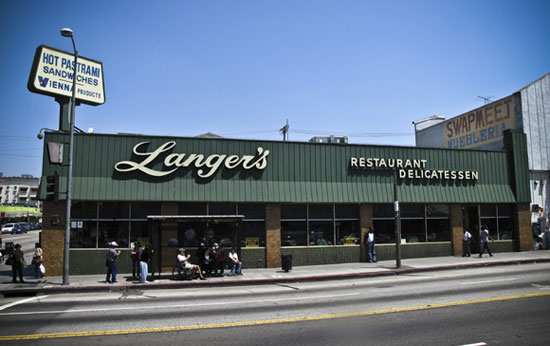
Langer's Deli says the Red Line saved its business in the days of high crime in the MacArthur Park neighborhood.
Posted 3/29/12
Kent Twitchell’s inside job
March 21, 2012

Kent Twitchell made his name as an outdoor artist whose enormous, hyper-realist outdoor portraits have become an indelible part of the L.A. landscape.
But there’s a downside to all that larger-than-life public visibility. He’s seen many of his iconic works disfigured by vandals and sometimes unceremoniously destroyed over the years. So it is with a sense of relief and renewed enthusiasm that he’s working on his latest project—a series of murals for the county’s downtown Bob Hope Patriotic Hall that will be displayed safely indoors.
Our video visit to Twitchell’s downtown L.A. studio offers some behind-the-scenes insights into this important work in progress, while the gallery below gives a sense of the breadth of his work, from the salvaged remains of earlier pieces to the prep work for such still-standing murals as “Harbor Freeway Overture.”
Twitchell was selected in 2010 for his role in the Patriotic Hall project, part of an extensive renovation. In coming months, his artwork, painted on mural fabric, will be moved from his studio and adhered and sealed to the lobby walls of the imposing 1926 building.
Posted 3/21/12
Double tunnel vision
March 14, 2012

The famed tunnels on Kanan Dume Road, including the ones known as T3, above, are getting new liners.
It just might be the biggest production to hit the tunnels of Kanan Dume Road since 1,000 extras turned out for the 1998 action flick “Deep Impact.”
Two sets of tunnels on the famed, twisting road through the canyons above Malibu are about to get a multimillion dollar makeover.
The Board of Supervisors this week approved plans to install steel liners in the tunnels at an estimated construction cost of between $7 million and $9.5 million. When related services such as planning, testing, consulting and surveying are included, the project’s total cost is expected to be about $11.1 million, the Department of Public Works said in a letter to supervisors.
The reinforcement is needed to deal with decades-old gunite lining and steel ribbing that are beginning to show their age.
“We did some inspections and found that some of the existing liner was coming down,” said Lance Grindle, assistant head of Public Works’ Design Division. “I don’t think anybody got hit, but the potential was there.” Another problem: water seeps into the tunnels in rainy weather. A new drainage system will be installed as part of the project.
Kanan Dume Road was dedicated in 1968, and at least two of its tunnels were in service by the following year. But completing the entire stretch from the Ventura Freeway to the Pacific Coast Highway was a long-running project. A 1965 Road Department memo said the highway (then known as Dume Canyon) was half-finished and would take six more years of inmate labor from the county’s now-defunct Detention Camps to complete the final six miles. (The same memo noted that the county got 70% of the right of way “gratis.” The rest of the land was valued at around $140,000.)
The work crews were followed by Hollywood crews, attracted by the look of tunnels set into craggy stone on a dramatic stretch of quintessential California roadway running from Agoura Hills to Malibu.
Over the years, perhaps you’ve caught the tunnels’ work in Chrysler or Mitsubishi commercials, or in movies like “Charlie’s Angels: Full Throttle.”
But their biggest star turn came in the final scenes of “Deep Impact,” in which they doubled as an Ark-like cave for residents of Planet Earth hunkering down in hopes of surviving a massive comet strike.
The two-day shoot included not just 1,000 human extras but also “lions, jaguars, hyenas, alligators, pythons, kangaroos, ostrich, buffalo, camels, elephants, zebras, cattle, chickens [and] birds,” according to the Film Scouts website.
Location scouts seeking to book the tunnels for upcoming appearances will need to work fast (as well as overcome a lot of county restrictions on vehicle size and weight.) The liner replacement work on the Kanan Dume tunnels known as T2 and T3 is expected to begin in September and conclude in August, 2013. After that, a separate project will target another pair of Kanan Dume tunnels, known as T1, as well as a single-barreled tunnel on Malibu Canyon Road.
For the Kanan Dume tunnels, work will take place on one side at a time, while the other side will temporarily be used for two-way traffic. Plans for handling traffic on Malibu Canyon during the eventual tunnel work there are still being developed to ensure that emergency vehicles will be able to get through and to determine whether some or all the work could take place at night.
The county had initially asked for bids on the tunnel work last year. But the original solicitation had to be amended several times, and when the bids came in, each of the four lowest bids had “some level of discrepancy, clerical error, omission, vagueness or mistake,” the Public Works letter said.
The new bids will be opened on April 10.
Posted 3/14/12
Sisterhood of the traveling bikes
February 7, 2012
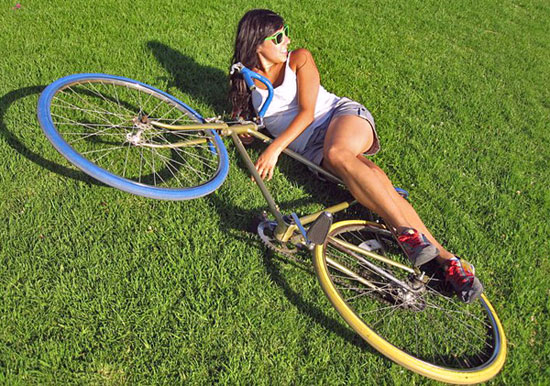
The movement to increase the number of women cyclists on L.A. streets includes Andrea Denike Martinez.
Andrea Denike Martinez still remembers the day she got back in the saddle.
It was Earth Day—April 22, 2010. For the first time since a bad bicycle accident fractured her skull and landed her in intensive care several years earlier, Martinez was ready to once again brave L.A.’s streets on two wheels.
Heading out from her Echo Park home, she was pumped up with environmental commitment—and “so nervous,” she recalled.
But moral support was also on the road that day. “I met another girl on a bike going that very same route.” She was a total stranger, but Katherine Gladwin was going in the same direction so they rode together to their jobs near Wilshire and Western.
They not only became fast friends, but started a small women’s cycling crew they dubbed the Bodacious Bike Babes. Since that first commute, they’ve organized and publicized group rides, volunteered at events like CicLAvia, and generally tried to encourage other women to take the plunge into an L.A. cycling world that remains overwhelmingly dominated by men.
Even though they may have felt alone out there at times, Martinez and Gladwin have plenty of company these days. On Wednesday, February 8, a coalition of women cycling advocates is set to gather in Long Beach to announce an ambitious goal: doubling the number of female bicyclists on Southern California streets within five years.
The initiative is led by a relatively new organization, Women on Bikes SoCal, which seeks to promote the “joy, beauty and benefits of bicycling for women.” Its campaign includes establishing the nation’s first women-only scholarship program for League Certified Bike Safety Instructors. (Information on supporting the initiative is here.)
One of the most visible faces of female cycling in Southern California, Long Beach Vice Mayor Suja Lowenthal, is among those backing the movement.
On a recent bicycle tour of her city, which is noted for its large and growing network of bike-friendly amenities, Lowenthal made it clear that dressing like Lance Armstrong—and riding like a Tour de France champion—are not required to join the cycling revolution.
“I want to wear my heels. I want to do all sorts of kinds of things that are about regular lifestyle,” Lowenthal said. “You don’t have to be the 50-mile-a-week spandex athlete. You can move about with your children and make it a very family-oriented, healthy, active lifestyle.”
In fact, Lowenthal thinks that the health and well-being of kids can be a powerful motivator in getting women to take up cycling. Childhood obesity is a “crisis of epic proportions,” she said, and there’s nothing like getting mothers on bikes to get everyone else onboard, too. “It is that green light: ‘Well, Mom’s OK with it,’ “ she said.
Still, if current statistics are any indication, there may be an uphill climb ahead.
The Los Angeles County Bicycle Coalition reports that only 16% of cyclists spotted during last year’s bicycle count were women—about the same percentage as in the previous count in 2009. A new report by the national advocacy group Alliance for Biking and Walking found that only 20% of those bicycling to work in Los Angeles are women—compared to 33% in Sacramento, 38% in Portland and a remarkable 49% in Memphis.
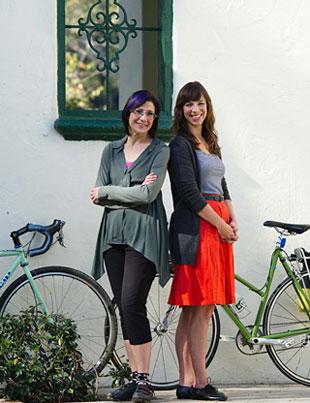
Jennifer Klausner, left, and Alexis Lantz of L.A. County Bicycle Coalition. Photo by Allan Crawford/Women on Bikes SoCal
Ask L.A. women cyclists, non-cyclists and would-be cyclists about the imbalance, and most are quick to sum up the problem in two words: too dangerous.
“A lot of it is people really are deathly afraid of cars, and the way people drive,” said Martinez, 33, co-founder of the Bodacious Bike Babes.
“It’s just too stressful being on the road,” added Kristen Schwarz, 28, who lives in East Hollywood and gave up her bicycle a couple of years ago after one too many encounters with speeding motorists. “It’s tough out there!”
Everyone, it seems, has a harrowing story or two.
“My first experiences in L.A. were pretty terrifying. I went down Wilshire. It was definitely a treacherous route,” said Gladwin, Martinez’s friend and co-founder. “My bicycling career in Los Angeles started in a pretty daunting fashion.”
She’s been struck twice by cars, the first time by a morning rush hour driver who mowed her down on Wilshire. “She stopped and she actually was complaining about heart palpitations because of the trauma she had experienced,” said Gladwin, 29, who was thrown to her knees in the collision. “I was intimidated but I wasn’t going to let that deter me.”
Magdalena Paluch, who interviewed women cyclists as part of a project to create a bicycling app while she earned her master’s degree in industrial design at Pasadena’s Art Center College of Design, said greater female involvement could lead to big things.
“I feel strongly that if anything will change, most of the time it changes because of the women. We are change agents,” she said. “Women are considered an ‘indicator species’ for biking and public transit because women are risk-averse. If you make it safe for women to bike, it’ll be safer for everybody.”
Cycling advocates agree. They say that creating more, and safer, facilities like “protected bike lanes”—in which riders are buffered from car traffic—and “bicycle boulevards” on slower-moving residential streets is the key to overcoming the perception and reality of dangerous L.A. streets.
Joe Linton, a CicLAvia consultant and longtime L.A. bicycle activist, noted that the gender disparity disappears in countries like the Netherlands, which has a highly developed network of bikeways and a culture in which cycling is considered a safe and commonplace way to get around.
“In very bicycle-safe cultures, women are actually the majority. In daredevil places, or places that are perceived as daredevil, like L.A., women are reluctant, and reluctant to go with kids,” Linton said. In Los Angeles, where men have long dominated the bike scene, it’s easy for experienced, hardcore cyclists to forget how women—and other less confident beginning riders—may view the challenges of the road, he said.
Advocates are increasingly pointing to women riders’ safety concerns as a way of advancing a broader agenda of making streets better for all cyclists and pedestrians, of all ages. “This is a growing issue,” said Alexis Lantz, planning and policy director for the Los Angeles County Bicycle Coalition.
In fact, the women’s safety argument has been made as part of a push for improvements in Los Angeles County’s Bicycle Master Plan, set to come before the Board of Supervisors in the weeks ahead.
Lantz said it also could be a factor as advocates press for more bicycle resources in the Southern California Association of Governments’ Regional Transportation Plan. And, on the federal level, she said, “Safe Routes to School” funding—which provides resources for many bicycle and pedestrian programs and is now threatened as part of the budget showdown in Washington—is another area in which women’s street safety concerns are a big part of the conversation.
Beyond the public policy arena, signs are everywhere that women are finally starting to make their move into the bike lane—at least a little bit.
Photos of bike-riding celebs like Zoe Deschanel, Hilary Duff and Vanessa Hudgens are all over the Internet, as are fashion-forward blogs such as Los Angeles Cycle Chic. Monday nights are reserved for women at the Bicycle Kitchen. Although nobody’s done a formal count, popular street-closing CicLAvia events seem to be bringing out large numbers of women. And young female activists are creating crews like Iron Unicorns, dedicated to creating “equality for women cyclists, both on the streets and in society.”
All those are valuable in building the women’s cycling movement, Lantz said.
“I think there is something that everyone can bring,” she said. “Cycle chic is a really great way of promoting cycling for some women. I really think that the more attention brought to cycling, the better.”
Posted 2/7/12
Bike lessons from Long Beach
January 19, 2012

Over the past five years, Long Beach has been accelerating its bicycle amenities in innovative ways.
With the county’s first bicycle master plan in decades heading into the homestretch, Supervisor Zev Yaroslavsky and a team including engineers and members of the Los Angeles County Bicycle Coalition recently hopped on bikes and took a look at what the future might hold.
On their cycling tour of Long Beach—which makes no secret of its aim of knocking Portland off its perch as America’s most bicycle-friendly city—they pedaled along innovative bike boulevards, green sharrows and a spectacular stretch of the Pacific.
Their takeaway: where there’s a will, there’s a bikeway. Ride along for a first-hand view.
Posted 1/19/12




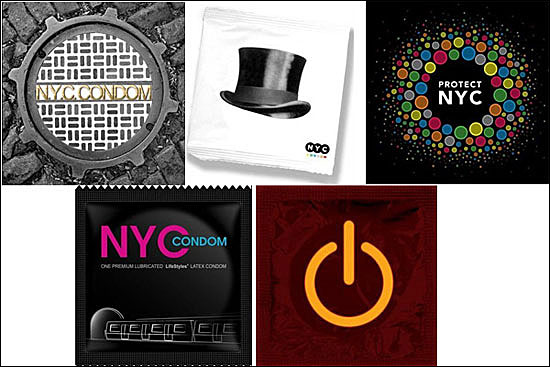

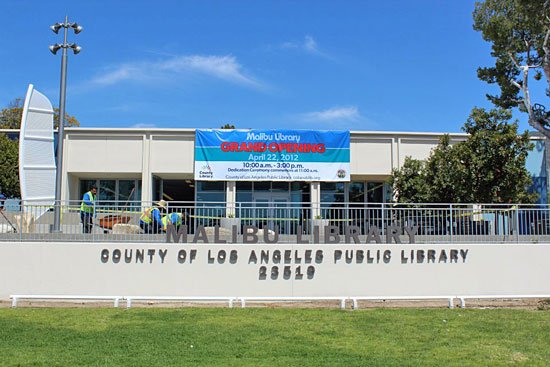
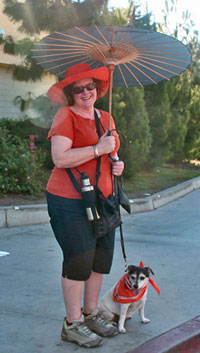
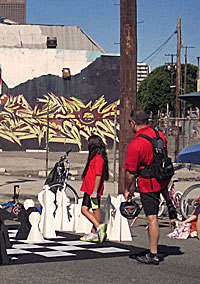
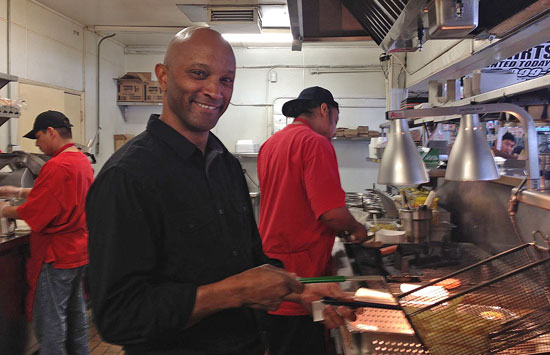
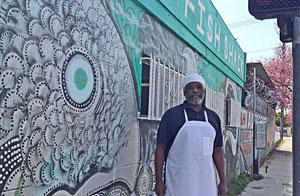
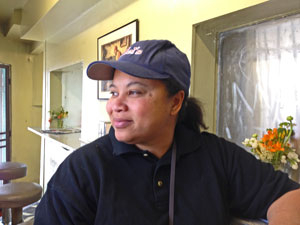
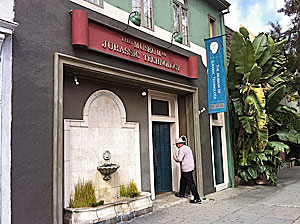





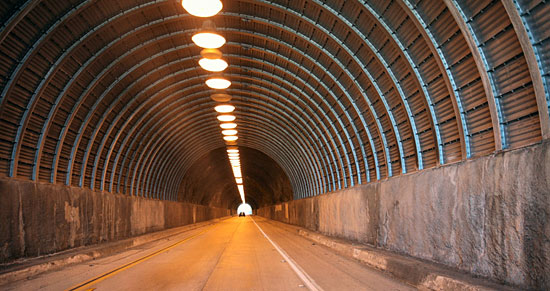

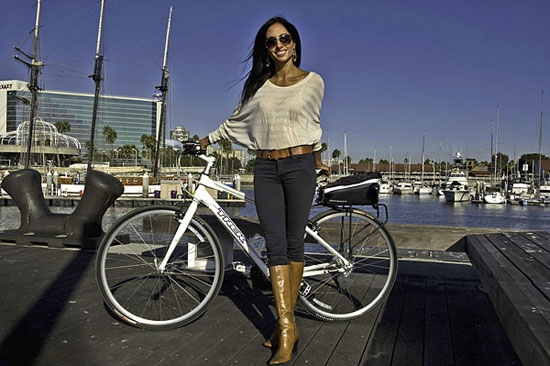





 Check for the latest closure information
Check for the latest closure information








